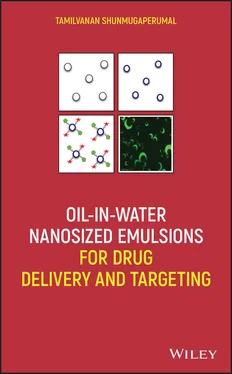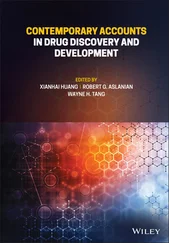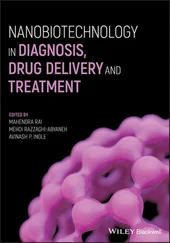2.2.4. Importance of Neutral‐Charged (Sterically Stabilized) Nanosized Emulsions
In many cases, however, greater emulsion stability can be achieved without imparting a significant surface charge to the emulsion droplets, by means of steric stabilization (Capek 2004). Nonionic surfactants possessing bulky hydrophilic groups like PEO protruding into the dispersion media decrease coalescence arising from droplet collisions. Another contribution to the steric stabilization of emulsions by nonionic surfactants is provided by the close packing of PEO chains at the droplet surface. The compact packing of PEO chains at the droplet surface creates steric stabilization because little or no interpenetration of PEO chains on different droplet surfaces occurs due to entropic repulsion (Dale et al. 2006). Large head groups carrying simultaneously charges of opposite signs, such as in zwitterionic surfactants, can cause similar effects. In polar dispersion media of low‐to‐medium ionic strength, these groups are, as a rule, strongly solvated (hydrated in the most common case of H 2O) (Yaseen et al. 2006). Voluminous and on an average almost non‐charged hydration shells, surrounding the emulsion droplet, possess a significant steric rigidity and can also effectively stabilize emulsions. There are, however, only a few examples in the literature that use zwitterionic surfactants as effective emulsion stabilizers. For example, lecithin was used for the stabilization of perfluorooctyl bromide (PFOB) in water emulsions, to be used as oxygen‐carrying system in a bio‐artificial liver device (Moolman et al. 2004). The Sauter mean diameter of 0.2 μm PFOB emulsion droplet in water was obtained by high‐pressure homogenization. The emulsion was stable for several months even at a volume fraction of 20%. Nonionic surfactants are more often used for emulsion stabilization than zwitterionic phospholipids because they are synthetically manufactured, can be well defined analytically, and have significantly less batch‐to‐batch variation than naturally occurring (egg yolk, soybean) lecithins.
The nonionic surfactant Span‐83 was used for stabilizing water droplets in oil to form a reactive storage carrier for the synthesis of calcium carbonate nanoparticles by means of a two membrane system (Hu et al. 2004). Firstly, an aqueous emulsion was prepared in kerosene stabilized by 0.02596 wt% Span and containing CO 3 −2ions in the droplets of the dispersed phase. The oil phase contained also a 0.02792 M solution of bis(2‐ethylhexyl) hydrogen phosphate (2DEHPA), a well‐known molecular carrier for the transportation of metal ions across emulsion liquid membranes (ELM). In the second stage, a CaCl 2aqueous solution‐filled dialysis tube was placed into the o/w emulsion and due to the reaction between CO 3 −2and Ca 2+ions in the aqueous droplets, CaCO 3nanoparticles were obtained. Similarly, ZnS nanoparticles were prepared in inverse water‐oil‐emulsion (Naskar et al. 2006). The stabilization of emulsions was provided by the addition of 5 wt% of Span 80 or Span 20, respectively, to the oil phase (cyclohexane). The dispersed phase contained a mixture of zinc acetate and thioacetamide, which react upon heating to form ZnS. The authors demonstrated that for the preparation of ZnS nanoparticles, the use of Span 20 was more favorable because of the smaller emulsion droplet size and therefore lower and more homogeneous size of the final particles. Another advantage was the higher stability of Span 20 against hydrolysis as compared to Span 80.
In general, fulfilling both stabilization mechanisms (smaller droplet size and lesser susceptibility of surfactant toward chemical degradation) simultaneously leads not only to the highest emulsion stability but also to lesser sensitivity to changes in the external conditions such as pH, ionic strength, and temperature. Therefore, the use of mixtures of different classes of surfactants for emulsion stabilization is frequently the most effective solution in many practical cases.
2.2.5. Advantages of Nanosized Emulsions Stabilized by Mixed or Multicomponent Emulsifier Molecules
Sometimes mixtures of natural zwitterionic surfactants used for emulsion stabilization contain small amounts of polar compounds that can be incorporated into the adsorption layer and lead to a modest droplet charge, which additionally stabilizes the emulsion (Tamilvanan 2008). Surface layer with charged natural admixtures reported by Trotta et al. (2002) is only a particular case of a very large class of emulsion‐stabilizing systems based on a tailored application of ionic–zwitterionic surfactant mixtures. Mixtures of dipalmitoylphosphatidylcholine (DPPC) and homologues and dimyristoylphosphatidylethanolamine (DMPE) phospholipids were utilized by Ishii and Nii (2005) for stabilizing model API‐carrying o/w nanosized emulsions. In contrast to the data, the main stability factor was found to be the optimal average hydrophilic–lipophilic balance (HLB) value of the stabilizers’ mixture, defined similarly for nonionic surfactants (Trotta et al. 2002). For example, emulsions prepared with mixtures of dimyristoylphosphatidylcholine (DMPC, zwitterionic) and DMPE behaved similarly to emulsions prepared by DMPC alone. This fact was explained by the equivalence of HLB values for both surfactants used, regardless of their ionic nature. However, the ionic character of a surfactant like DMPE (and therefore the charge of respective emulsion droplets) can be affected by the pH of the dispersion medium.
The o/w nanosized emulsions stabilized by mixed ionic/nonionic surfactants revealed very high physical stability and were found to be most appropriate for dermatological applications as a ceramide‐carrying colloidal system (Yilmaz and Borchert 2005). Greater emulsion stability was achieved by the combination of the nonionic steric stabilizer Tween 80 and the phospholipid co‐stabilizers phytosphingosine and phosphatidylethanolamine.
2.2.6. “Stealth” Property of Nanosized Emulsions: In Vitro Demonstrations
Anionic emulsion formulations capture apolipoproteins (apo) along with other plasma proteins within minutes after an infusion in human blood, facilitating their fast elimination. In contrast, cationic emulsions reveal a much longer retention time in the plasma. Moreover, cationic colloidal carriers can promote the penetration of therapeutic agents into cell surfaces possibly via an endocytotic mechanism (Calvo et al. 1997). To improve the API targeting efficacy of colloidal carriers of anionic emulsions and to further prolong the circulating effect of the cationic emulsions, a mixed stabilizer film at the oil–water droplet interface composed of nonionic Poloxamer 188 and ionic lipoid E80 and stearylamine/oleylamine was created by combining the effects of electrostatic and steric barriers at the oil–water interface (Tamilvanan et al. 2005). In order to prove this concept, surface (charge)‐modified o/w nanosized emulsions (cationic and anionic) were prepared following the well‐established combined emulsification techniques ( de novo ) and these two emulsions were characterized for their droplet size distribution and surface charge. Marketed lipofundin MCT 10%, deoxycholic acid‐based anionic emulsions, oleylamine‐/stearylamine‐based cationic emulsions, and oleic acid‐based anionic emulsions were selected in this study. The effect of these emulsions on in vitro adsorption of plasma proteins was investigated by means of two‐dimensional polyacrylamide gel electrophoresis (2D PAGE).
Competition between steric repulsion by poloxamer and electrostatic attraction by ionic components led to the sensitive adsorption of small molecular weight proteins like apo, albumins by the surface of colloidal carriers whereas all emulsion droplets were effectively shielded from the adsorption of larger proteins like immunoglobulins, fibrinogen, etc., enhancing the shelf life of emulsion formulations in the blood ( Fig. 2.2). The apoA‐I along with apoA‐IV have been suggested to modulate the distribution of apoE between the different lipoprotein particles in the blood and thereby affect their clearance (Tamilvanan et al. 2005). In addition, the attachment of apoE would greatly alter the in vivo distribution of fat emulsions since this protein is a ligand for the apoE‐specific receptors on the liver parenchymal cells. The higher the preferential adsorption of apoA‐I onto the cationic emulsion droplets, the more intensified the displacement/redistribution of apoE would, therefore, be expected to occur on these types of cationic emulsion formulations in the blood (Tamilvanan et al. 2005). Indeed, the ratio of apoA‐I to apoA‐IV was very close to 1 for Lipofundin ®MCT 10% whereas it was about 0.26 for deoxycholic acid‐based anionic emulsion and above 5 for oleic acid‐based anionic emulsion and both cationic emulsions. This indicates that emulsions having similar surface/interfacial charge imparted by different anion‐forming stabilizers (oleic or deoxycholic acids) exhibited markedly different protein adsorption patterns.
Читать дальше












